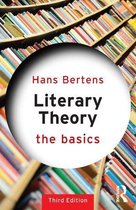Summary
Samenvatting literary theory - Bertens
- Course
- Institution
- Book
Samenvatting van (bijna) het volledige boek van Bertens: literary theory. Een voordeel van deze samenvatting is dat het in het Nederlands is geschreven. In de inhoudsopgave in het voorbeeld kan je zien welke paragrafen precies worden besproken. Dit zijn ze bijna allemaal.
[Show more]




